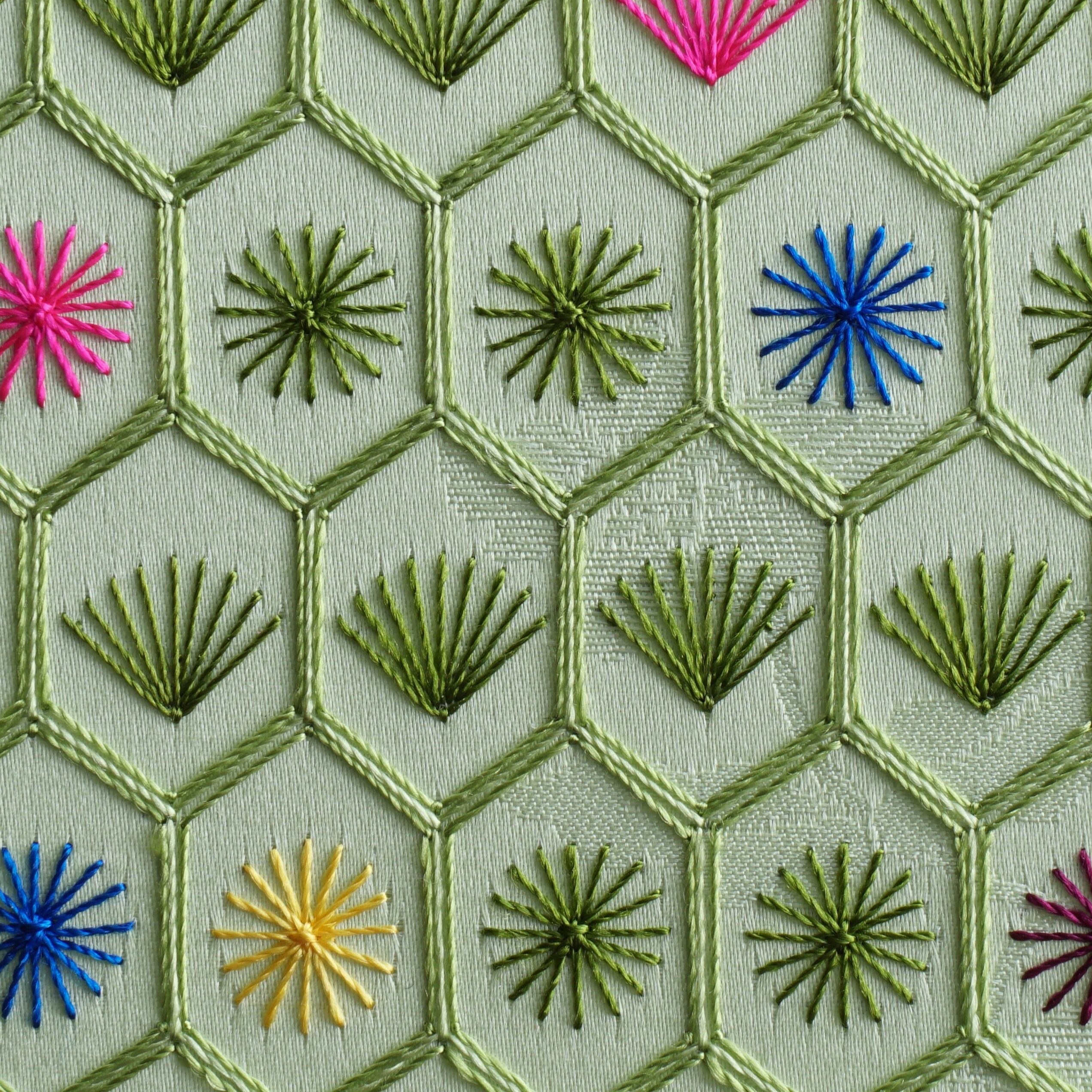
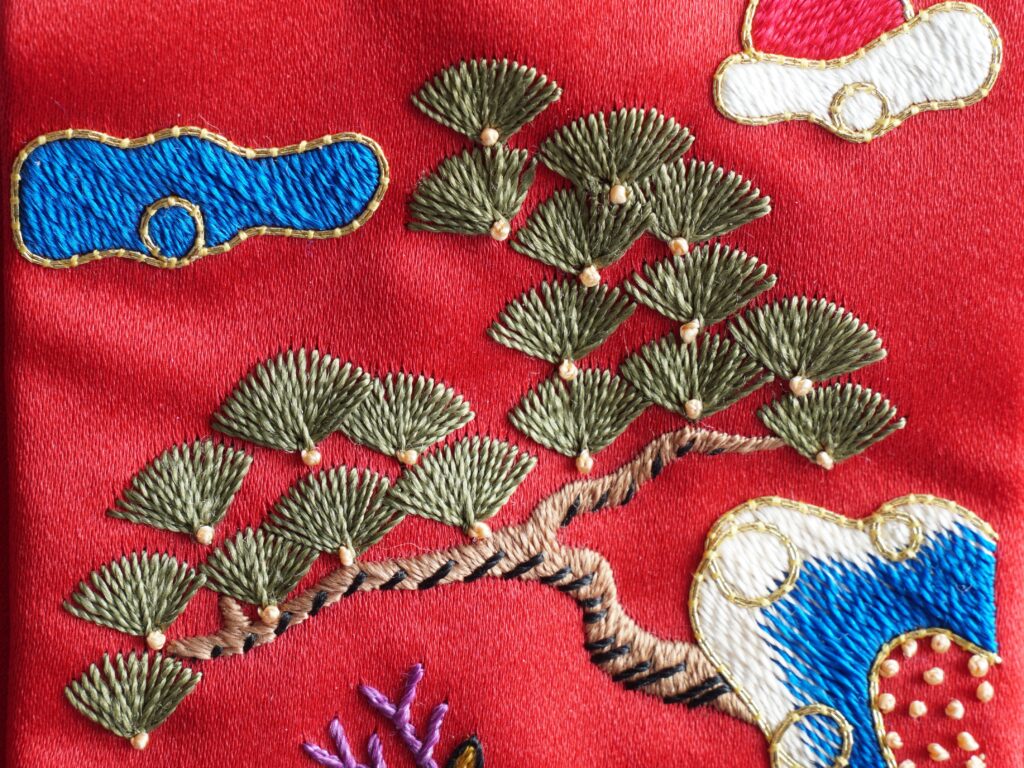
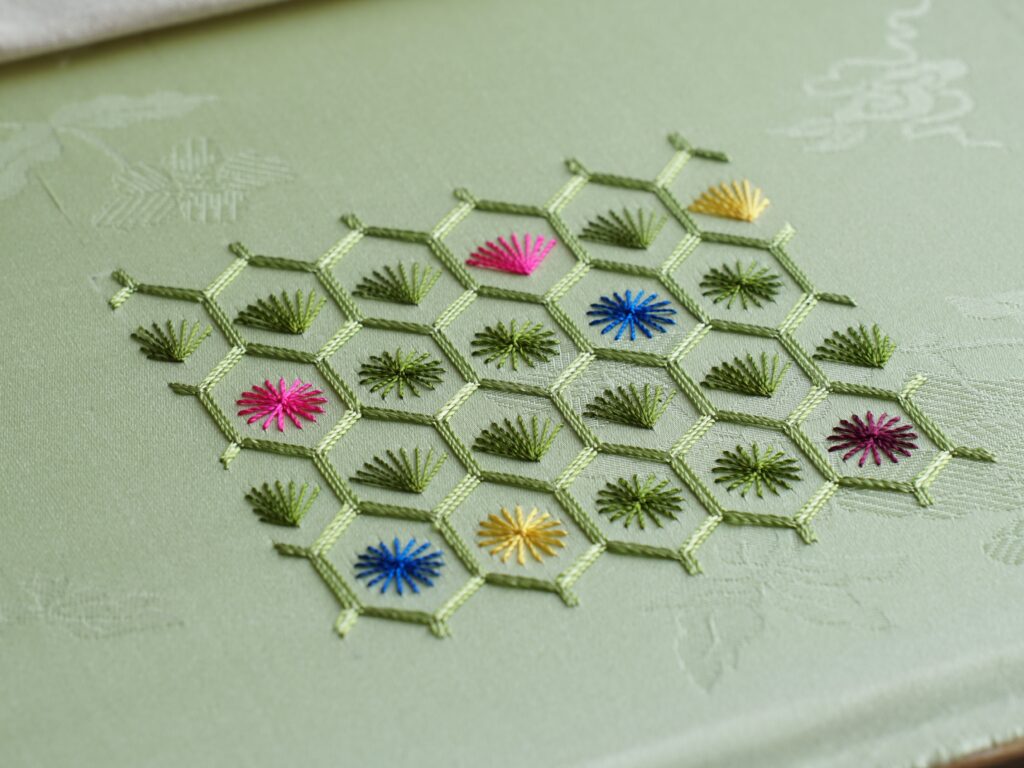
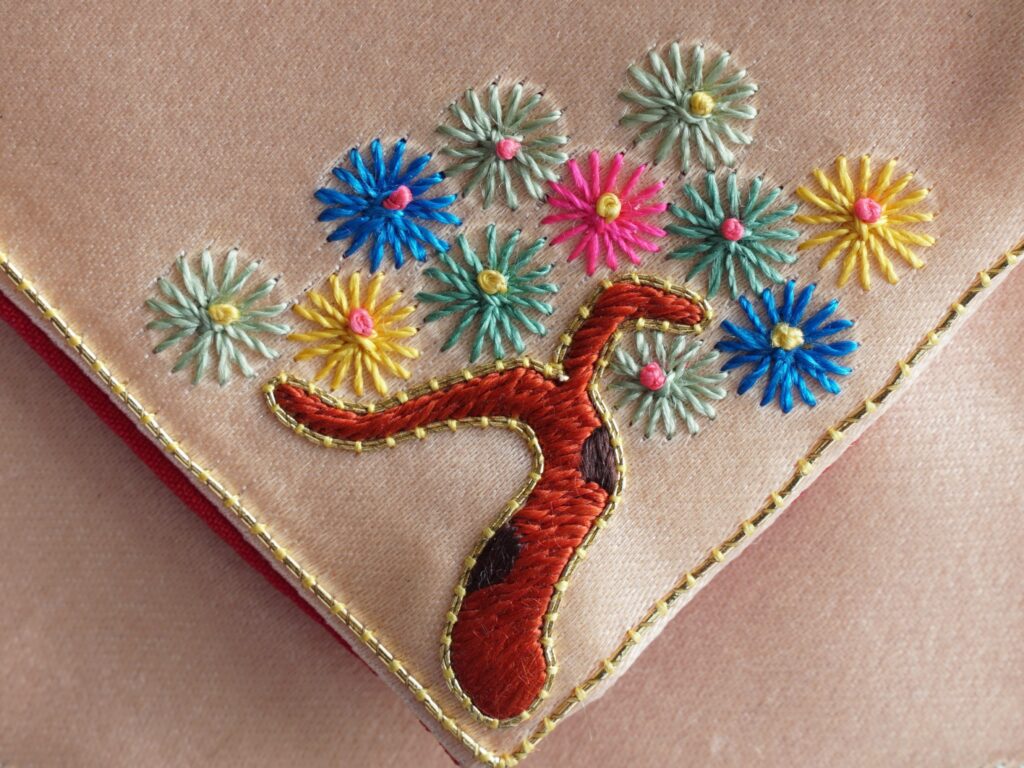
Do you find elements of the natural world, like the sun, moon, clouds, and mountains, appearing in your creative practice? Throughout history, these elements have symbolized eternity and consistency across cultures. In Korea, culturally specific symbols of longevity include the pine tree, bamboo, elixir mushroom, crane, deer, and tortoise. These motifs, and their associated meanings, are the essence of traditional Korean art and craft, including embroidery. Korean makers have stitched their wishes for a long life, good health, and happiness into their creations for many generations.
In this class, Heehwa Jo will teach two important Korean stitches: 솔잎수[solip-su](pine leaf stitch) and 귀갑수[gwigap-su](tortoise shell stitch). Both stitches are rich in symbolism and versatility, making them perfect for various projects. As we stitch together, Heehwa will provide a brief overview to the art of Korean embroidery.
While silk fabrics and threads are the traditional materials used, participants are encouraged to bring any kinds of materials they wish to experiment with. The focus of this session will be on understanding the meaning behind these stitches and practicing the techniques involved.
Date
Thursday, October 31, 2024
Time
12:00-2:30pm EST
Location
Zoom, a link will be sent to participants the day before class
Cost
$65 for the individual class, $350 for the series
*All sessions will be recorded. A link to the recording will be emailed to all those who register following the live session. This link is live for one month after the end of the series for you to watch at your convenience.
A materials kit for this series can be purchased here. Please note that this kit includes most but not all of the class materials suggested by each teacher. Suggested materials for this class can be found below.
Class Materials:
A brief introduction to stretching fabric on stretcher bars will be provided along with the embroidery designs.
Traditional Materials
- Fine 2-ply twisted silk thread in any color (thread width: approx. 1㎜ or less)
- Short and fine embroidery needle (length: approx. 3㎝ / width: approx. 1㎜ or less)
- Silk satin in any color, non-stretch, not too slippery or floaty (size: min. A4 or Letter)
- Embroidery snips
- Wooden stretcher bar frame (size: depending on your fabric size, fabric size is at least 2㎝ longer both in lengthwise and widthwise)
- For fabric stretching, fabric glue or stick glue and flat head thumb tacks
- White carbon tracing paper for design transferring (hand drawing with pen is another option)
- Thumbtack remover or stainless spoon as a substitute
Less Traditional Alternatives
- Any kinds of thread in any color such as cotton thread, sewing thread, knitting yarn, etc.
- Needle that fits your thread
- Any non-stretch fabric (cotton, linen, etc.)
- Embroidery snips
- Any type of fabric stretcher (embroidery hoop or stretcher bar frame)
- Tools for design transferring (tracing paper, pen, or erasable marker)
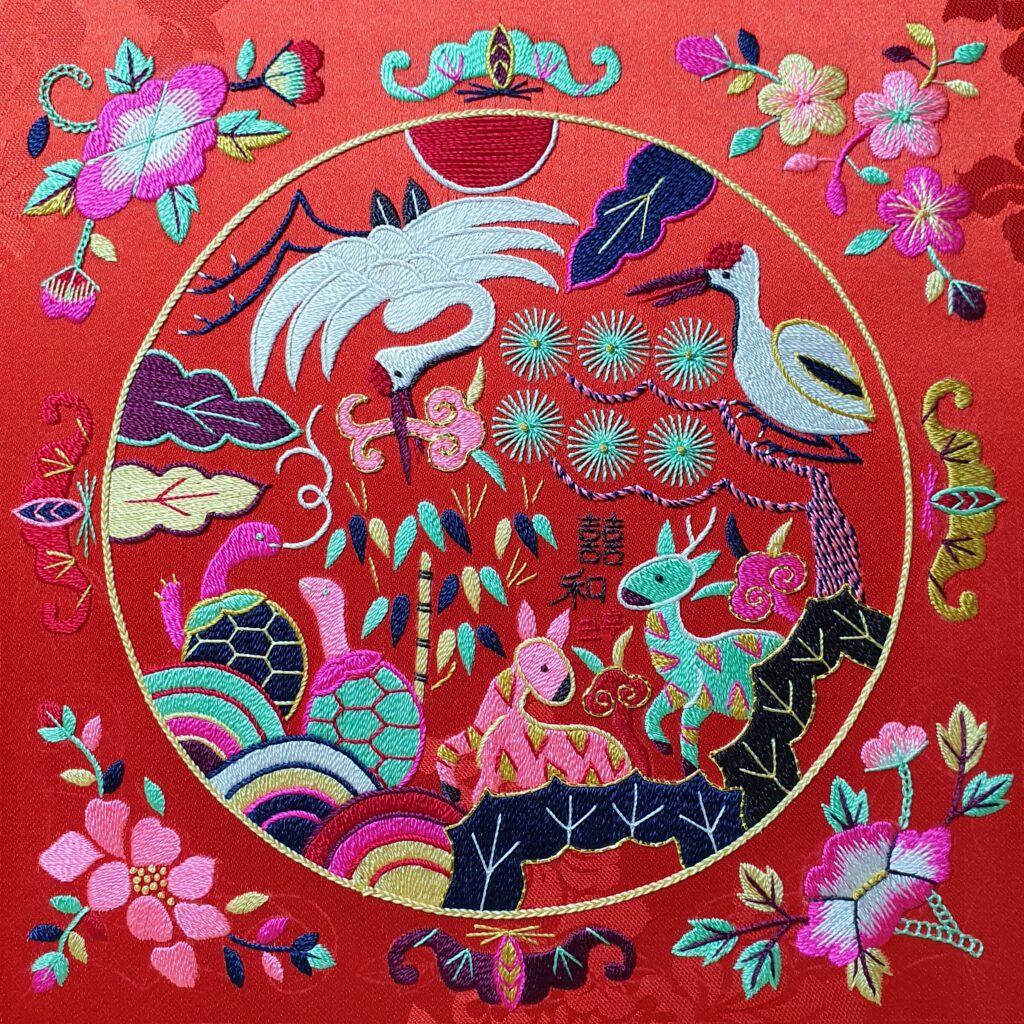
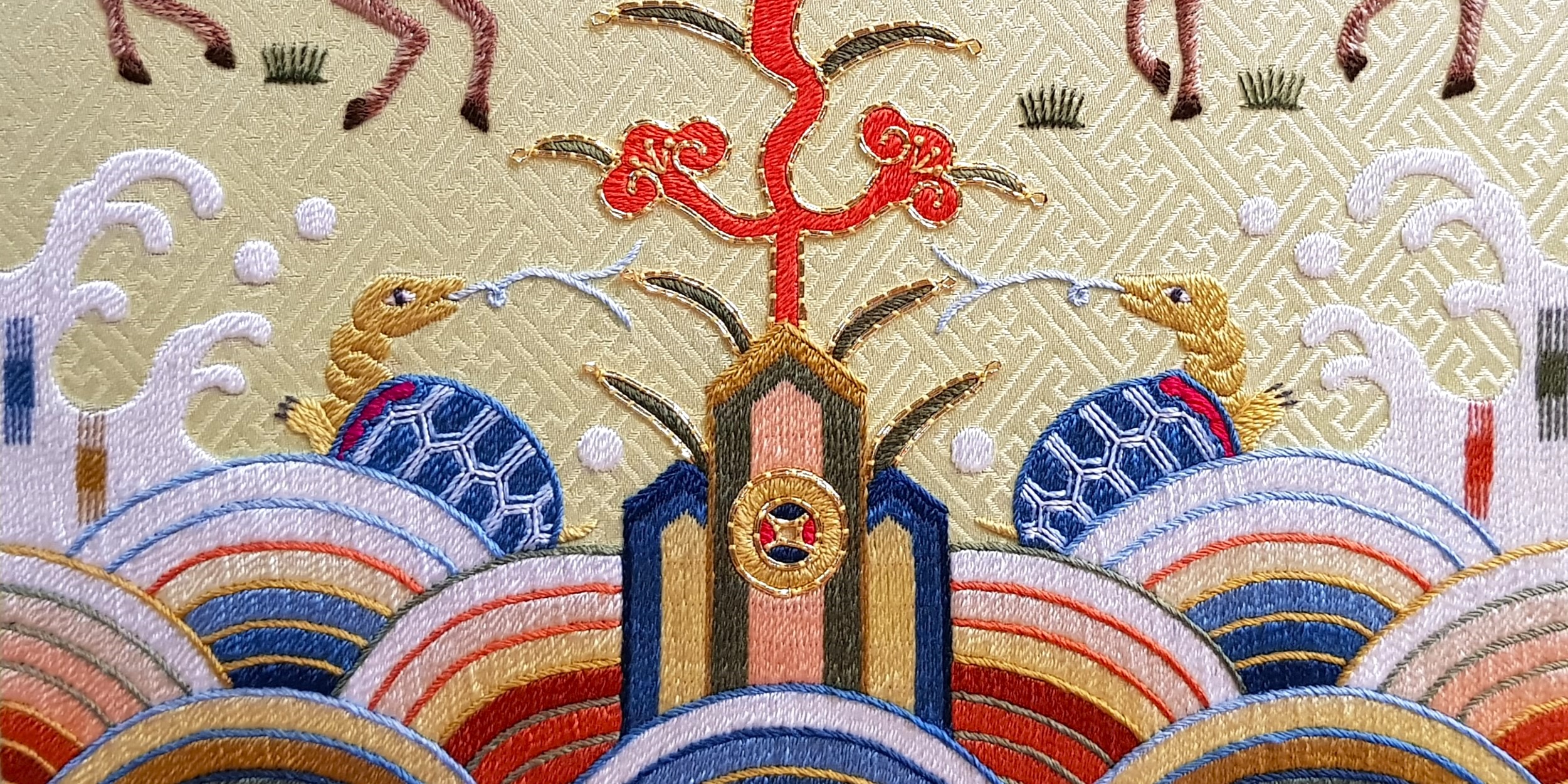
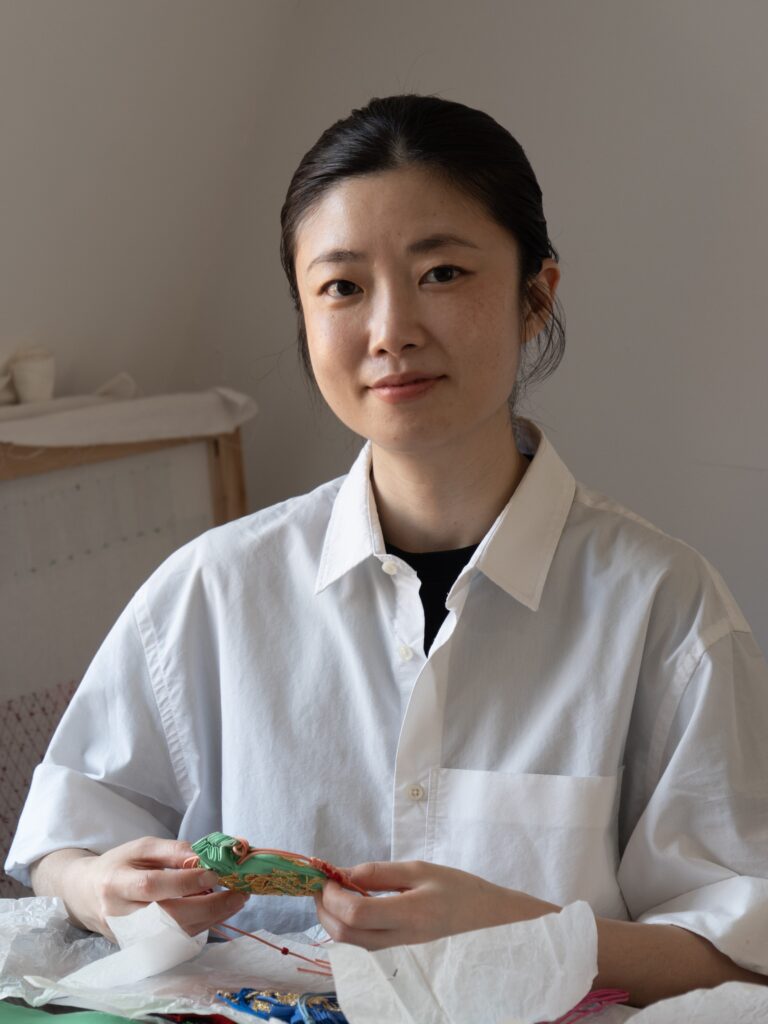
Our Teacher
Heehwa Jo is a Korean embroidery artist, tutor, and author currently based in London, UK. Jo has always been fascinated by Korean traditions and textile arts, which ultimately led her to the world of embroidery, particularly traditional Korean methods. Since 2017, she has been a professional embroiderer, teaching people in her studio and participating in various exhibitions and workshops.
Her interest in embroidery and art was shaped by many experiences: double majoring in Korean Language and Literature along with Textiles and Fashion Design at university, working in the fashion industry, and completing a three-year course in traditional Korean embroidery. Despite these influences, she firmly believes that ancient artifacts and their stories inspire and motivate her the most.
Jo’s embroidery is a fusion of Korean tradition and her own creative touch. It can come in the form of combining traditional techniques with modern designs or offering new interpretations using symbolic motifs and colors. As traditional Korean art is meant to be read rather than seen, she uses stitches, designs, and colors as the language of her work. When practicing embroidery, she loves to stress the importance of expressing yourself freely, as the free-spirited ancestors did. Such innovative moves are the driving force that keeps creating tradition and pushing boundaries for the next generation.
You can find more about Jo’s work on her website and on Instagram.
